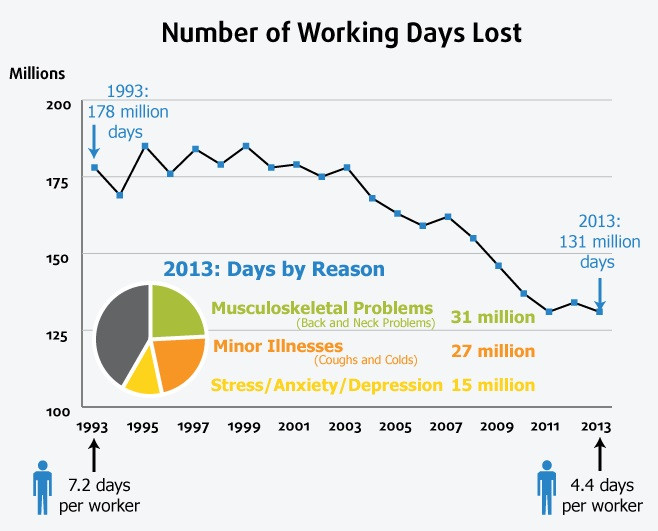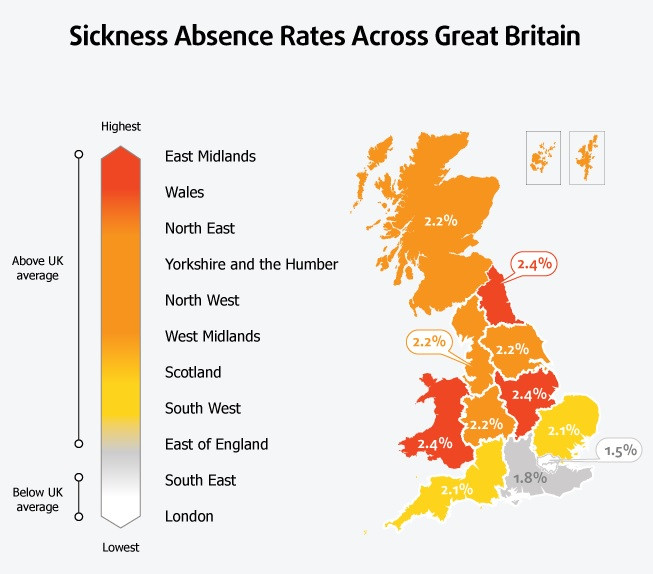131 Million Days Lost as Minor illnesses Keep Britons Off Work

Keep those Vitamin C levels high and try to avoid your spluttering colleagues as a staggering 131 million days were lost due to sickness absences in the UK last year through minor illnesses which kept Britons off work.
But according to official figures the amount of days lost is sharply down from 178 million days in 1993 – representing a fall of more than 26% [Fig 1].

The Office for National Statistics (ONS) also revealed that minor illnesses were the most common reasons given for sickness as more days were lost to back, neck and muscle pain than any other cause.
The research body also revealed that sickness absence levels were lowest in London (1.5%) and Wales, the North East and the East Midlands saw the highest rates at 2.4% [Fig 2].

The ONS explained self-employed workers were less likely than employees to have a spell of sickness and larger workforces reported the highest sickness levels.
"The lowest rates of sickness absence are found in SMEs – with the smallest (fewer than 25 employees) having lost just 1.7% of working hours to sickness absence (against 2.3% in the largest companies)," said Karen Steadman, head of health and wellbeing programmes at The Work Foundation.
"Workers in SMEs often feel increased pressure not to be absent from work, out of concern for letting down colleagues – but the real cost of presenteeism affects long-term productivity and individual health.
"The recently proposed Health and Work Service promises to provide support for SMEs, but with referral to the service only occurring after four weeks of absence, and a lack of evidence about what advice and guidance would actually be of use to small organisations, there are already doubts as to how well this large part of the workforce will be served."
The study also found that there were lower sickness absence rates in the private sector, but the gap with the public sector has narrowed over past 20 years.
The research also revealed that workers aged 16 to 24 were 46% less likely to be off work due to sickness than a worker aged between 50 and state pension age.
© Copyright IBTimes 2025. All rights reserved.





















